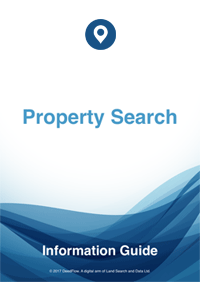Finding Property Boundaries
Contents
Overview
There is an expectancy by the public that their Land Registry documents will provide details of their property boundaries. This is not so in England and Wales. The Land Registry are responsible for property registration but not for boundary information. That said, to resolve a boundary issue it is usually necessary to obtain the registered documents comprised in a Boundary Search, whichever route you ultimately take to provide a resolution.
Two Types of Property Boundaries
Most boundary disputes involve only a narrow strip of land, which may be only inches or centimetres wide. Such small areas of land immediately introduce complexity. In the first place there are two definitions of a property boundary, i.e. there is a legal boundary and a physical boundary and they are not necessarily the same. Further, boundaries are often made up of hedges, trees or watercourses. Tree and hedge boundaries change as the plants mature and watercourses often change direction, especially where it meanders.
Legal Boundary
The Title Register and Title Plan for each side of the disputed boundary must be looked at to ascertain the legal boundary, as assisted with any available Associated Documents. These make up the bulk of our Boundary Search. You should realise that when the Land Registry create a Title Plan they identify the property boundary by inserting a red boundary line within the black boundary line of an Ordnance Survey Map. These lines have a thickness which will not translate to inches or centimetres on the actual boundary, and in any event, are only as accurate as the OS Map.
Physical Boundary
The physical boundary can only be ascertained by inspecting the actual boundary itself, using the Land Registry documents as a starting point.
It is usually the case that statements in the Title Register will imply the correct position of a property boundary, or at least narrow the issues.
Resolving the Dispute
The most economical way to resolve a boundary dispute is to first obtain the Boundary Search and then to highlight any content that assists in identifying the boundaries. You should then ask your neighbour to do the same, and if necessary, to jointly inspect the actual boundary against the documents. There is a high likelihood that you will be able to agree the boundaries between you. Resorting to litigation is very expensive and not a matter the court will welcome.
Getting the Land Registry documents Updated
Adding permanence to your agreement can be achieved in the following ways:
1. By drawing up an informal Boundary Agreement.
An informal boundary agreement is created and signed by each of the property owners, and a plan is attached to the agreement and countersigned. This is then sent to the Land Registry with a request that they note it in the respective Title Registers. This is advantageous because it is cheap, simple and speedy. However, it will not bind subsequent buyers of your property.
2. By applying to the Land Registry for a Determined Boundary.
The Land Registry will only accept an application if the boundary positions are agreed by each of you. After applying to them and paying their fee (£90 at the date of writing) they will visit your property and if they agree with your findings they will record the new boundary on each of the Title Registers and Title Plans. This will be binding on all future purchasers.
Boundary Search 2 Properties
Obtain all the available property documents held to help resolve common boundary problems. For 2 Adjoining Properties.
£99.95Boundary Search 3 Properties
Obtain all the available property documents held to help resolve common boundary problems. For 3 Adjoining Properties.
£146.95Boundary Search 4 Properties
Obtain all the available property documents held to help resolve common boundary problems. For 4 Adjoining Properties.
£193.95


